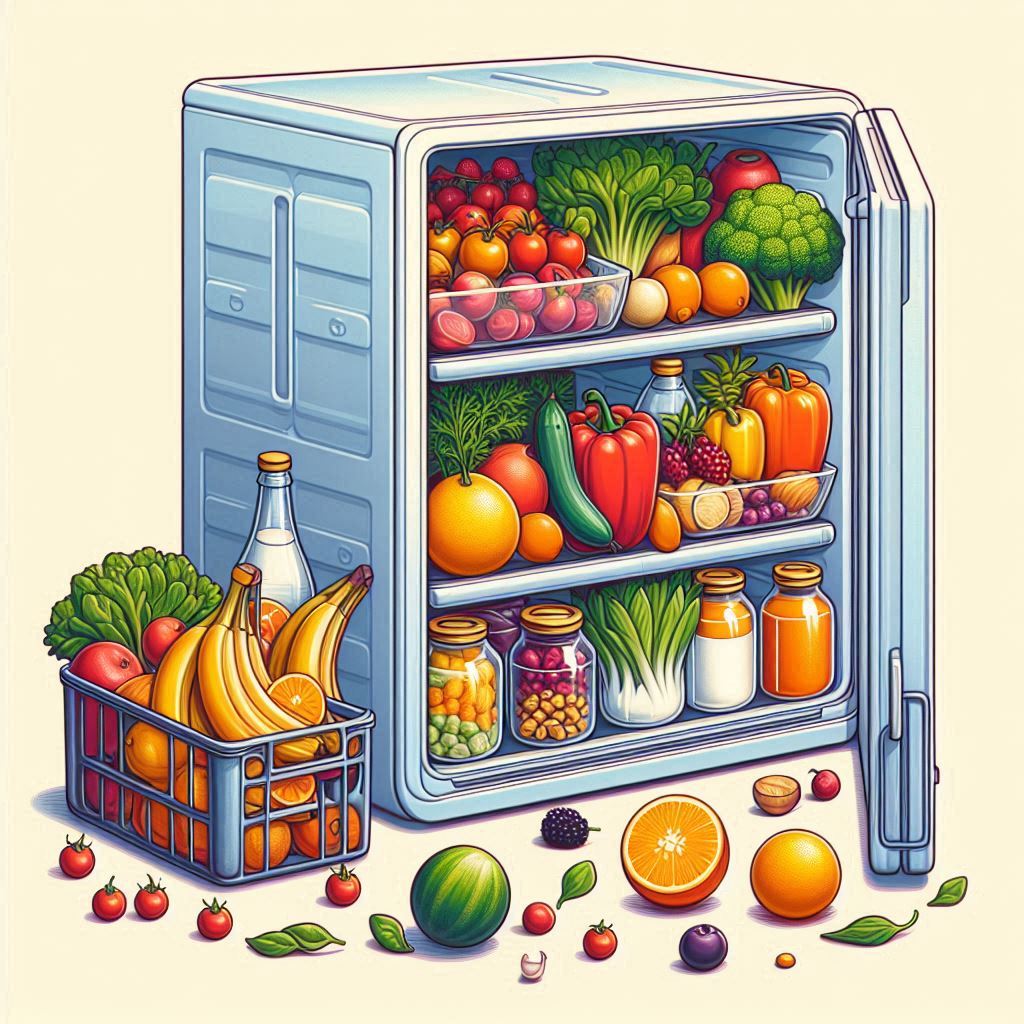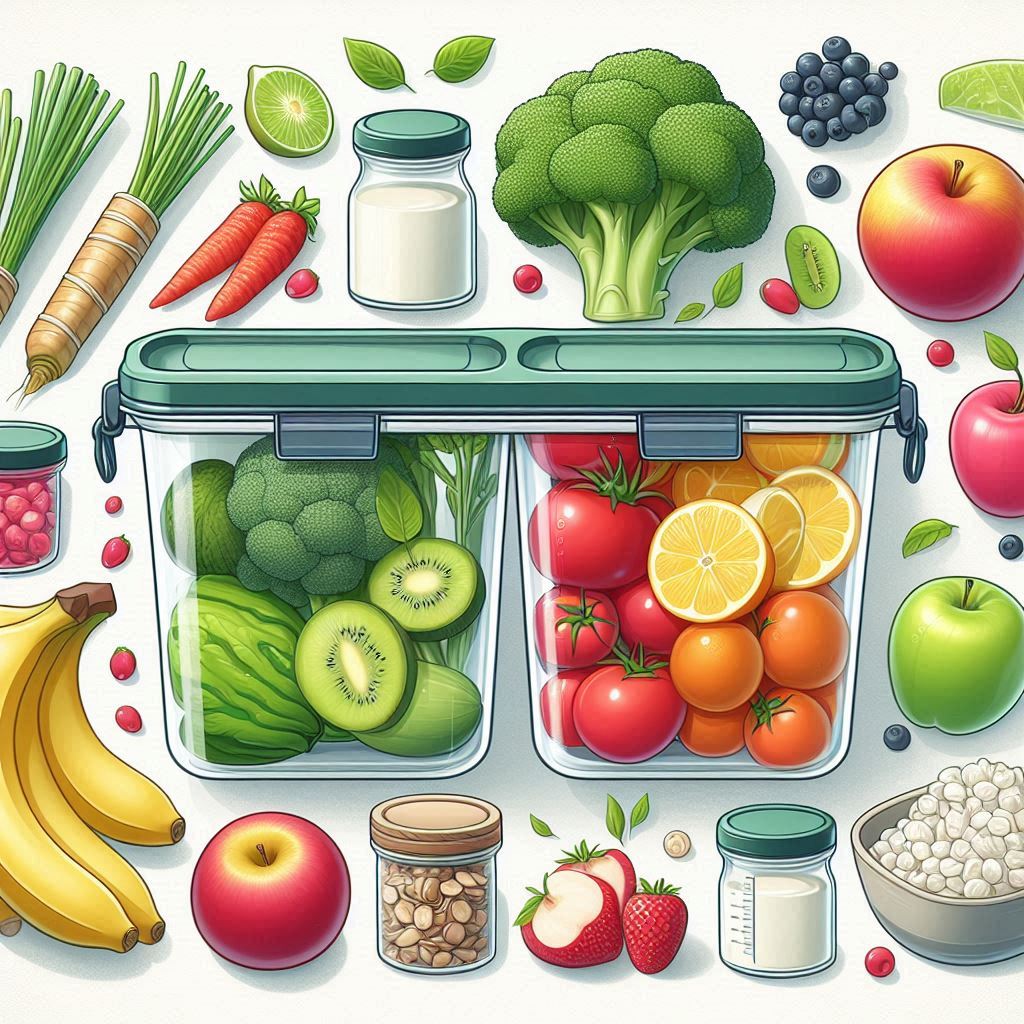Reducing plastic use in the kitchen, especially when it comes to storing fruits and vegetables, is a great step toward living a more eco-friendly lifestyle. Many of us are used to grabbing plastic bags, containers, or plastic wrap to keep produce fresh. However, with growing awareness of the environmental harm caused by plastic, there’s an increasing interest in sustainable, plastic-free storage methods.
If you’re new to zero-waste or sustainable living, don’t worry! Storing fruits and vegetables without plastic is easier than you think. In this guide, we’ll cover how to keep your produce fresh, explore different storage methods, and share eco-friendly alternatives to plastic, all while reducing food waste and minimizing your environmental footprint.
Why Avoid Plastic for Storing Fruits and Vegetables?

Environmental Impact
Plastic is convenient, but it comes with significant environmental costs. Single-use plastic bags and wraps contribute to pollution, clog up landfills, and take hundreds of years to break down. Even when plastic is recycled, much of it ends up in the ocean or being incinerated, releasing toxic chemicals into the environment.
Health Concerns
Some plastics, especially those used for food storage, can leach harmful chemicals like BPA (Bisphenol A) into food. Over time, exposure to these chemicals may lead to health issues. Using natural, non-toxic alternatives helps protect both your health and the environment.
General Tips for Storing Fruits and Vegetables
Before we dive into specific storage methods, it’s helpful to understand a few general tips for keeping produce fresh without plastic:
- Store Produce Separately: Different fruits and vegetables have varying storage needs. Some emit ethylene gas, which speeds up ripening, while others are sensitive to it. It’s important to store ethylene-producing fruits (like apples and bananas) away from ethylene-sensitive produce (like leafy greens).
- Avoid Washing Until Ready to Use: Washing fruits and vegetables before storage can introduce moisture, which speeds up spoilage. Wash them just before eating or cooking.
- Keep an Eye on Ripening: Regularly check your fruits and vegetables for signs of ripening or spoilage. If something is starting to go bad, use it up in a recipe to avoid waste.
Best Plastic-free Storage Methods for Fruits
Room Temperature Storage
Some fruits, such as bananas, apples, and citrus, are best stored at room temperature. Here’s how to keep them fresh without using plastic:
- Apples: Store in a cool, dark place (e.g., a pantry) and keep them away from other fruits to avoid speeding up their ripening process.
- Bananas: Hang bananas on a fruit hook or leave them on the counter. To slow down ripening, separate them from the bunch.
- Citrus: Oranges, lemons, and limes can be stored on the countertop for up to a week. If you need them to last longer, move them to the fridge in a reusable cloth bag.
Refrigeration (for Longer Storage)
Some fruits, especially berries, are more delicate and need refrigeration to stay fresh longer. Here’s how to store them without plastic:
- Berries (strawberries, blueberries, raspberries): Store in a glass container lined with a dry cloth or paper towel to absorb excess moisture. Avoid washing until ready to eat.
- Grapes: Keep grapes in a breathable container (like a mesh or cloth produce bag) in the fridge.
Freezing Fruits
If you have excess fruit, freezing is a great way to preserve it for smoothies, baking, or snacking later. Cut fruit into pieces, spread them on a baking sheet, and freeze until solid. Once frozen, transfer them to a reusable silicone freezer bag or glass jar.
Best Plastic-free Storage Methods for Vegetables
Room Temperature Storage
Certain vegetables prefer being stored in a cool, dry place and will last longer at room temperature. Here are some examples:
- Onions and Garlic: Store in a well-ventilated area like a mesh bag or a wire basket. Avoid refrigerating them as they can become soft or moldy.
- Potatoes and Sweet Potatoes: Keep in a cool, dark place (like a pantry) in a basket or cloth bag. Don’t store them in the fridge, as this can affect their texture and flavor.
Refrigeration
Many vegetables last longer when kept in the fridge, especially leafy greens and root vegetables.
- Leafy Greens (spinach, kale, lettuce): Wash greens and wrap them in a damp cloth or place them in a cloth-produce bag. Store them in the crisper drawer to maintain moisture without excess condensation.
- Carrots, Beets, and Radishes: Cut off the green tops to prevent moisture loss and store in a container with a damp cloth. For even better results, place them in a bowl of water in the fridge to keep them crisp.
Fermenting or Pickling Vegetables
For a long-term storage solution, consider fermenting or pickling vegetables like cucumbers, cabbage, or carrots. This not only preserves your produce but also adds flavor and boosts its nutritional value.
How to Store Specific Fruits and Vegetables

Here’s a quick guide on how to store specific fruits and vegetables without plastic to keep them fresh for as long as possible:
| Produce | Best Storage Method |
|---|---|
| Bananas | Hang or store at room temperature, away from other fruits |
| Berries | Store in the fridge in a glass container lined with a cloth |
| Citrus (oranges, lemons) | Store on the counter or in the fridge in a cloth bag |
| Leafy Greens | Wash, wrap in a damp cloth, store in the fridge crisper drawer |
| Carrots | Remove tops, store in a damp cloth or bowl of water in the fridge |
| Onions and Garlic | Store in a cool, dry, and ventilated area |
| Apples | Store in a cool, dark place; refrigerate for longer storage |
| Tomatoes | Store at room temperature, away from direct sunlight |
| Potatoes | Keep in a cool, dark, well-ventilated place |
| Cucumbers | Wrap in a damp cloth and store in the fridge |
Pro Tip:
If you notice certain items ripening quickly, adjust your storage method by moving them to a cooler area or refrigerating them.
Zero-Waste Storage Alternatives to Plastic
Switching from plastic to eco-friendly storage solutions is easy once you know what options are available. Here are some excellent alternatives:
1. Reusable Cloth Produce Bags
Perfect for storing vegetables and fruits that need airflow, these bags are a great replacement for plastic bags. They’re ideal for leafy greens, potatoes, onions, and other produce that benefit from breathability.
2. Glass Jars
Glass jars are fantastic for keeping small fruits like berries, herbs, and leftover cut produce fresh in the fridge. You can also use them to store washed and cut vegetables.
3. Beeswax Wraps
Beeswax wraps are an eco-friendly alternative to plastic wrap and work well for covering cut fruits like melons or storing loose vegetables. They are washable, reusable, and biodegradable.
4. Silicone Storage Bags
For items that need a tighter seal, such as cut fruits or vegetables, reusable silicone bags are a durable, non-toxic alternative to plastic bags. They’re freezer-safe, making them great for long-term storage as well.
5. Mesh Bags or Wire Baskets
These are perfect for storing root vegetables, onions, and garlic in a cool, ventilated space. They prevent moisture buildup and extend the life of your produce.
Table: Comparison of Zero-Waste Storage Alternatives
| Alternative | Best For | Eco-Benefit |
|---|---|---|
| Cloth Produce Bags | Leafy greens, potatoes, onions | Breathable, reusable, compostable |
| Glass Jars | Berries, cut fruits, herbs | Reusable, easy to clean, no chemicals |
| Beeswax Wraps | Cut fruit, covering vegetables | Reusable, biodegradable, replaces plastic wrap |
| Silicone Storage Bags | Cut vegetables, freezing fruits | Reusable, durable, freezer-safe |
| Mesh Bags/Wire Baskets | Potatoes, onions, garlic | Prevents moisture buildup, reusable |
FAQs About Storing Fruits and Vegetables Without Plastic
Q1: How do I store fruits and vegetables if I don’t have much fridge space?
Prioritize refrigeration for delicate items like berries, leafy greens, and cut produce. Store room-temperature items (such as apples, onions, and potatoes) in a cool pantry or countertop in well-ventilated baskets or cloth bags.
Q2: Can I freeze fruits and vegetables without using plastic?
Yes! Use reusable silicone freezer bags or glass containers to freeze fruits and vegetables. Be sure to blanch vegetables before freezing to preserve their quality.
Q3: How can I keep leafy greens fresh without plastic?
Wrap leafy greens in a damp cloth or use a cloth-produce bag. Store them in the crisper drawer to maintain moisture without causing excess condensation, which can lead to spoilage.
Q4: Can I store fruits and vegetables together?
No, it’s best to store fruits and vegetables separately. Many fruits release ethylene gas, which speeds up ripening and can cause vegetables to spoil faster.
Q5: Are there any eco-friendly ways to store herbs?
Yes! Store herbs like cilantro and parsley in a glass jar with a little water at the bottom. Cover the jar with a reusable beeswax wrap or cloth bag, and place it in the fridge. You can also dry or freeze herbs for long-term storage.
Conclusion
Storing fruits and vegetables without plastic is a small but impactful step toward reducing waste and living more sustainably. By choosing natural, reusable storage methods like cloth produce bags, glass jars, and beeswax wraps, you’ll not only keep your produce fresh but also minimize your environmental impact. Whether you’re a zero-waste beginner or an eco-conscious expert, these tips and alternatives will help you make a positive difference in your kitchen.
Remember, every little step counts in creating a greener, healthier lifestyle for yourself and the planet!



0 Comments